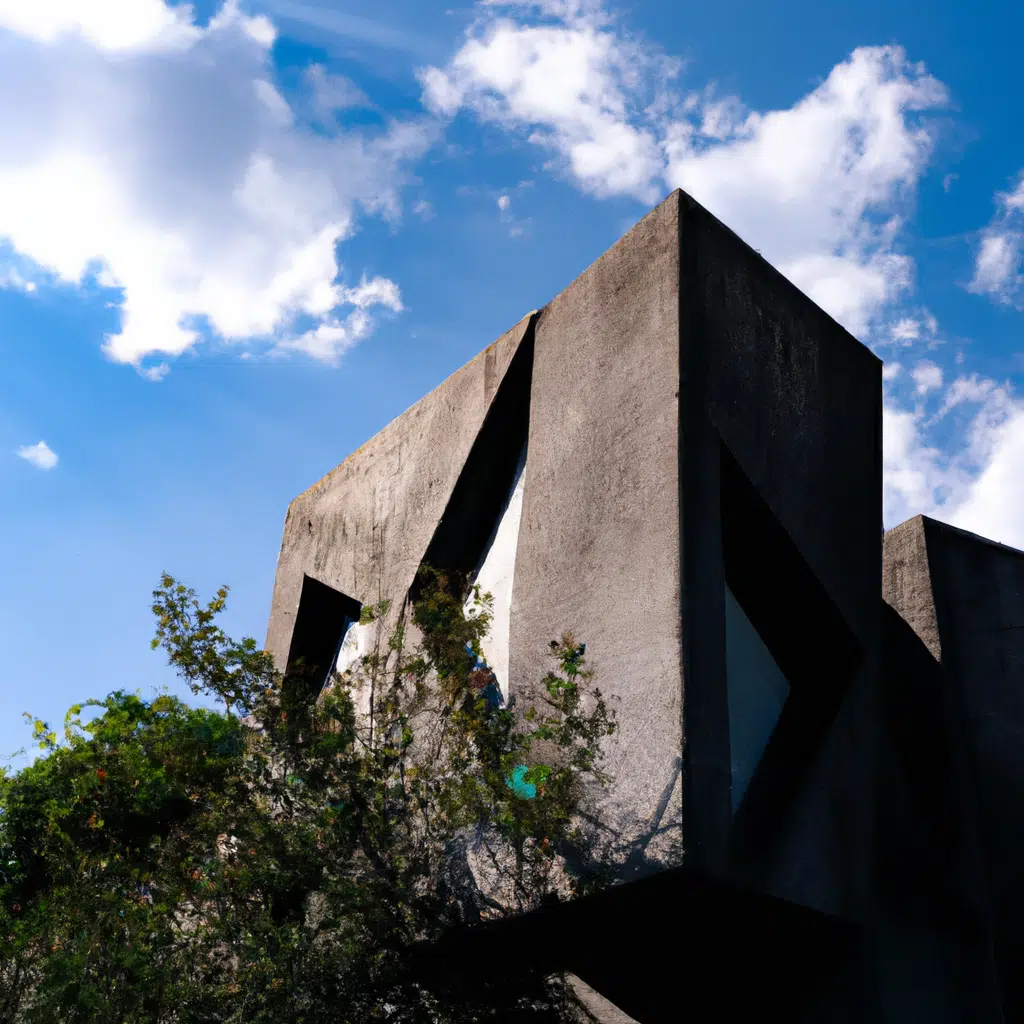
Brutalist architecture is a style that originated in the mid-20th century and is characterized by its raw, unfinished, and exposed concrete surfaces. It is a polarizing style with a rich history that has been both celebrated and condemned. Brutalist homes, in particular, have become increasingly popular in recent years, with many homeowners drawn to their bold and daring designs.
What is Brutalist Architecture?
Brutalist architecture emerged in the 1950s as a response to the International Style, which was characterized by its sleek, glass and steel buildings. Brutalist architects sought to create buildings that were more honest and authentic by exposing the materials used in their construction. They also aimed to create buildings that were more functional and utilitarian, and less concerned with aesthetics.
One of the defining features of Brutalist architecture is its use of raw, unfinished concrete. This material is left exposed, without any decorative finishes, and is often left to weather naturally. The result is a building that appears rugged and unpolished, with a sense of rawness and honesty.
The History of Brutalist Architecture
The term “Brutalism” was coined by the British architects Alison and Peter Smithson in the 1950s. They used the term to describe the raw, unpolished concrete buildings they were designing at the time. However, the style was not fully defined until the 1960s, when it became popular among a group of architects known as the “New Brutalists.”
The New Brutalists believed that architecture should be honest and functional, and that it should reflect the underlying principles of the building’s construction. They rejected the decorative and ornamental styles of the past, and instead focused on creating buildings that were simple, utilitarian, and unadorned.
Brutalism reached its peak in the 1960s and 1970s, when it was used to create a wide range of buildings, from public housing projects to government buildings to university campuses. However, by the 1980s, the style had fallen out of favor, and many Brutalist buildings were seen as eyesores and targets for demolition.
The Rise of Brutalist Homes
Despite its decline in popularity, Brutalism has experienced a resurgence in recent years, particularly in the realm of residential architecture. Many homeowners are drawn to the bold and daring designs of Brutalist homes, which often feature large expanses of concrete and bold geometric shapes.
One of the key reasons for the rise of Brutalist homes is their unique aesthetic appeal. The raw, unpolished concrete surfaces of these homes have a rugged, industrial feel that is both modern and timeless. They also offer a sense of privacy and security, as the thick concrete walls provide a barrier against noise and intruders.
Another reason for the popularity of Brutalist homes is their sustainability. Concrete is an extremely durable and long-lasting material, which means that these homes require little maintenance and have a long lifespan. Additionally, the thermal mass of concrete walls helps to regulate temperature, reducing the need for heating and cooling.
The Controversy Surrounding Brutalist Homes
Despite their growing popularity, Brutalist homes remain a polarizing style of architecture. Many people find them unappealing, with their rough, unfinished surfaces and stark geometric shapes. Some even see them as eyesores that detract from the surrounding landscape.
However, others see Brutalist homes as works of art, with their bold and daring designs representing a new frontier in architecture. They appreciate the honesty and authenticity of these homes, and the way they reflect the underlying principles of their construction.
Conclusion
Brutalist architecture is a style that has been both celebrated and condemned over the years. Its raw, unfinished surfaces and stark geometric shapes have polarized opinions, with some seeing it as a bold and daring new frontier in architecture, while others view it as an eyesore. Despite this controversy, Brutalist homes have become increasingly popular in recent years, with many homeowners drawn to their unique aesthetic appeal and sustainability. Whether you love or hate this style of architecture, there’s no denying its impact on the world of design.

